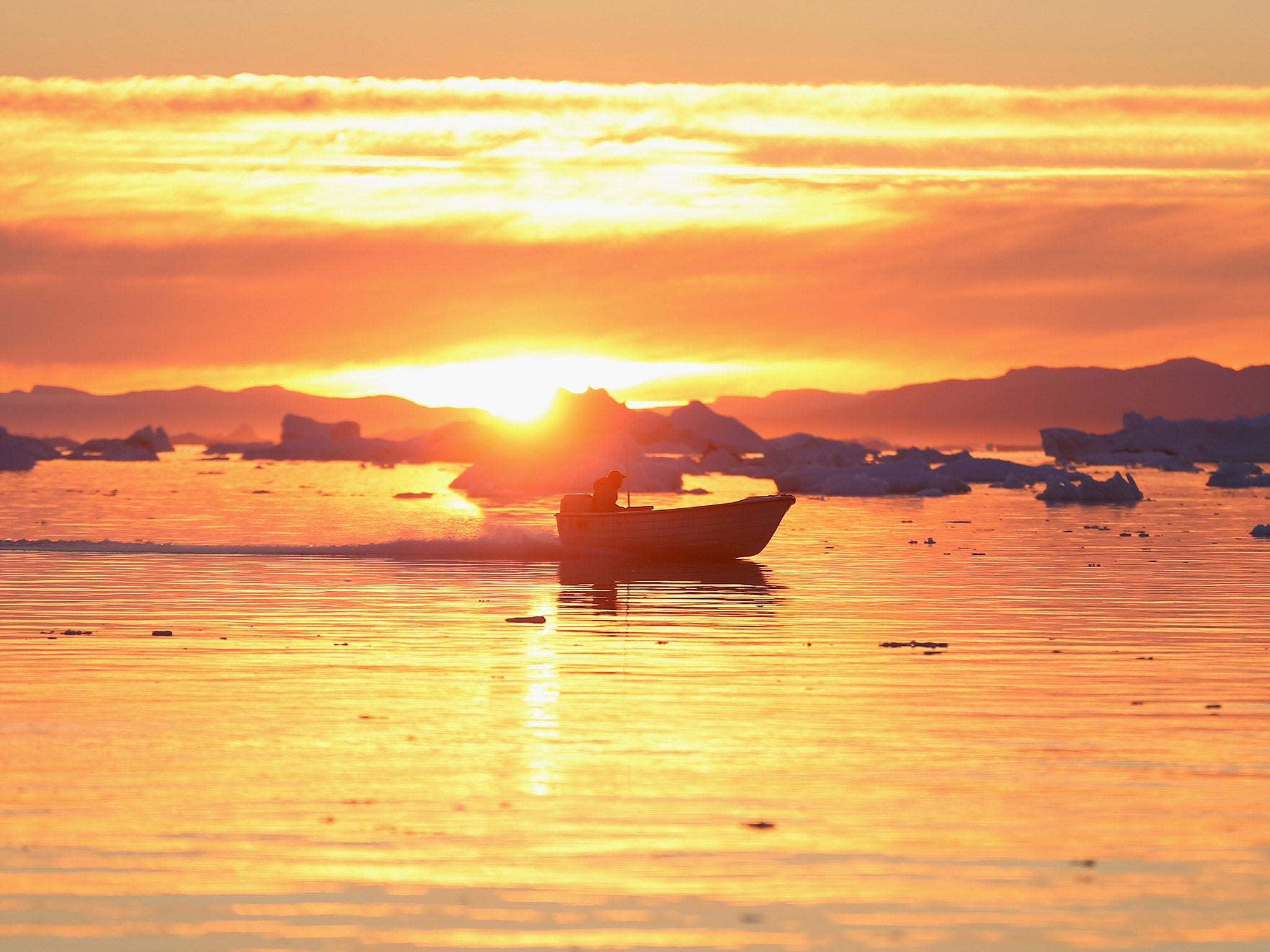Climate change: CO2 emissions 'will delay next ice age by 100,000 years'
New research finds humans are having a 'mind-boggling' impact on the Earth

Mankind is pumping so much carbon dioxide into the atmosphere that it could postpone the next ice age by more than 100,000 years, according to new research which finds humans are having a “mind-boggling” impact on the Earth.
The volume of CO2 emissions that has accumulated in the atmosphere is so great that it has fundamentally changed the relationship between people and the planet as human behaviour radically alters the way the system operates, the research shows.
The study found that the next ice age would be pushed back by about 50,000 years even if emissions stopped overnight. And if the volume of greenhouse gases forecast to be produced in the coming decades comes to pass it could be postponed by more than 100,000 years.
The impact of greenhouse gases is so profound and long-lasting because they can linger in the atmosphere for centuries. During this time they upset the evolution of the ice sheets of the Northern Hemisphere which build up gradually over a period of 90,000 years through a complex, highly uneven, feedback mechanism of cooling temperatures, increasing snowfall, rising levels of reflected sunlight and falling temperatures.
“It is mind-boggling that humankind is able to interfere with a mechanism that shaped the world as we know it,” said Dr Andrey Ganopolski, lead author of the study, by the Potsdam Institute for Climate Impact Research.
“But our study shows that CO2-emissions from burning oil, coal and gas are already sufficient to postpone the next ice age for another 50,000 years,” Dr Ganopolski added.
And unless drastic action is taken to swiftly cut emissions the next ice age could be pushed back considerably further than that, according to Dr Ricarda Winkelmann, co-author of the research, published in the journal Nature.
“Due to the extremely long life-time of CO2 in the atmosphere, past and future emissions have a significant impact on timing of the next glacial inception,” she said.
“Our analysis shows that even small additional carbon emissions will most likely affect the evolution of the Northern Hemisphere ice sheets over tens of thousands of years and moderate future CO-emissions are bound to postpone the next ice age by at least 100,000 years,” said Dr Winkelmann.
Climate change around the world - in pictures
Show all 17The paper defines moderate human emissions as being a cumulative amount of between 1000 billion and 1,500 billion tonnes.
Mankind has already emitted more than 500 billion tonnes of CO2 into the atmosphere and many scientists fear fossil fuels are so entrenched in the energy system that emissions could eventually total well over 1,000 tonnes before their expected eradication at some point during the second half of this century, even after world leaders recently agreed a deal in Paris last month to step up action against climate change.
The research is the first to quantify the impact of manmade CO2 emissions on the timing of the next ice age and demonstrates just how much the relationship has changed between humanity and the planet, the authors said.
“Like no other force on the planet, ice ages have shaped the global environment and thereby determined the development of human civilisation,” said Dr Winkelmann.
“We owe our fertile soil to the last ice age that also carved out today’s landscapes, leaving glaciers and rivers behind, forming fjords, moraines and lakes. However, today it is humankind with its emissions from burning fossil fuels that determines the future development of the planet,” she added.
How do ice ages occur and why do they keep happening
Ice ages occur about every 20,000 years with a major one happening every 100,000 years.
They are triggered by predictable changes to the earth’s orbit around the sun, which periodically take the planet further from the sun, meaning that it cools down.
By itself, this wouldn’t be nearly enough to inflict an ice age. But the change sets in motion a lengthy feedback mechanism in which – very unevenly and over tens of thousands of years – the distancing of the world from the sun causes temperatures to drop, increasing the amount of snowfall and ensuring more sunlight is reflected back into the atmosphere. This, in turn, further reduces the temperature and the process begins again.
But with CO2 levels at their current level, any cooling set in motion by changes in the orbit are outweighed by the warming effect – making an ice age impossible and upsetting the evolution of the Northern Hemisphere.
Subscribe to Independent Premium to bookmark this article
Want to bookmark your favourite articles and stories to read or reference later? Start your Independent Premium subscription today.

Join our commenting forum
Join thought-provoking conversations, follow other Independent readers and see their replies